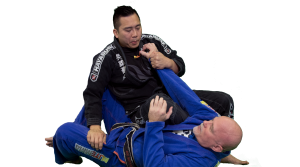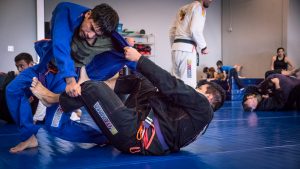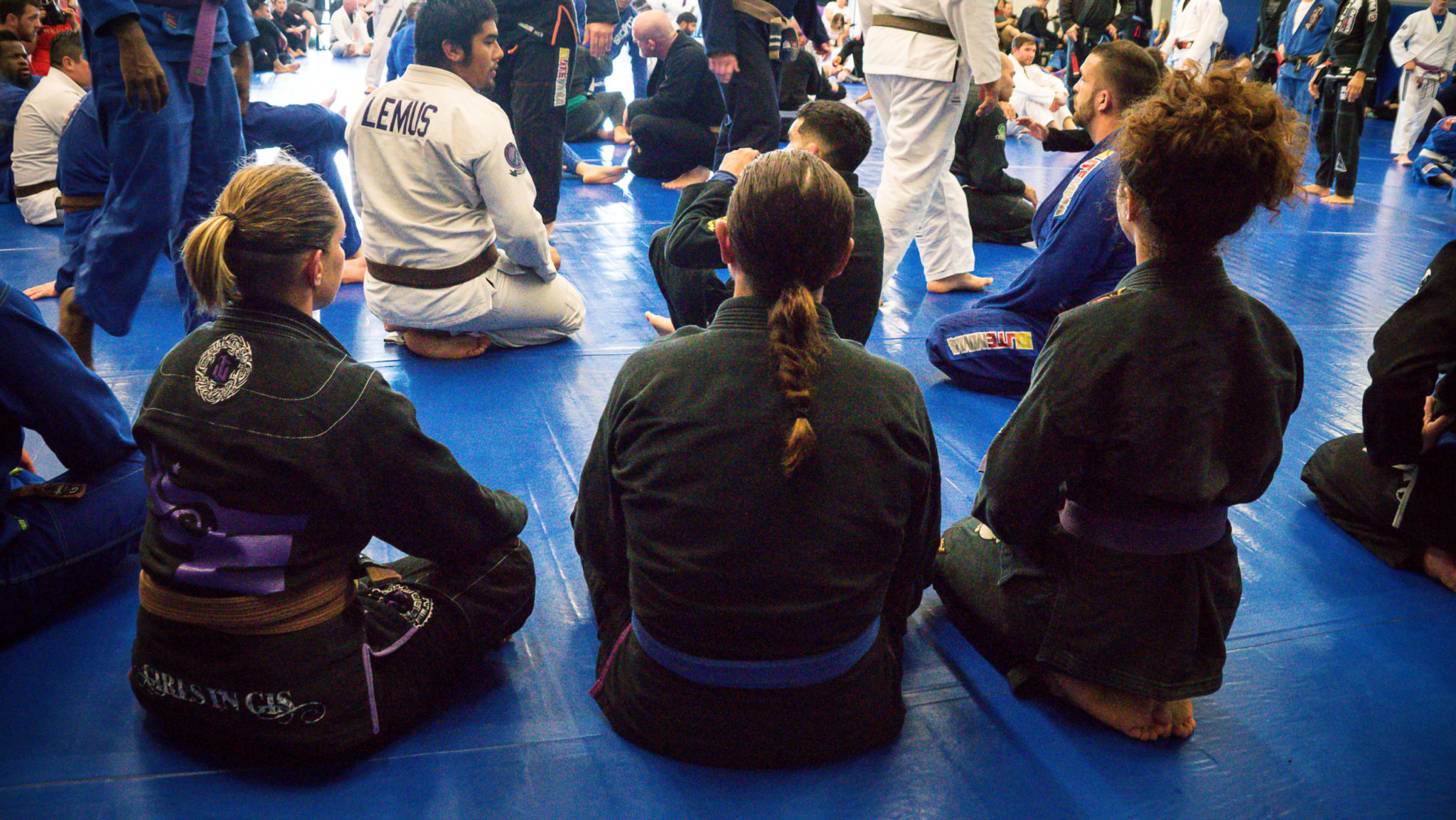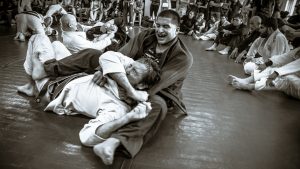Jump To:
There are many different forms of martial arts to learn and master. Two that are often mixed up in the fighting world are Mixed Martial Arts (MMA) and Brazilian Jiu-Jitsu. For the best training in MMA and Brazilian Jiu Jitsu Baytown, you can enroll at Elite MMA.
Since Elite MMA offers a wide range of martial arts styles to choose from, it can sometimes be challenging to know which one to choose. Because of this, establishing a core understanding of each is essential.
In this blog, we’re going to focus on the key differences between MMA and BJJ.
But first, let’s quickly breakdown each practice.
 MMA is a general term standing for mixed martial arts—emphasis on mixed. Successful MMA fighters are trained in a variety of different disciplines such as karate, muay thai, kickboxing, classic boxing, taekwondo, sambo, and judo.
The contact sport gained mass popularity in the media in the early 90s with the rise of the hit TV show, UFC. To this day, UFC is one of the biggest promotions of MMA and revolutionized the sport as a household name for years to come.
MMA is a general term standing for mixed martial arts—emphasis on mixed. Successful MMA fighters are trained in a variety of different disciplines such as karate, muay thai, kickboxing, classic boxing, taekwondo, sambo, and judo.
The contact sport gained mass popularity in the media in the early 90s with the rise of the hit TV show, UFC. To this day, UFC is one of the biggest promotions of MMA and revolutionized the sport as a household name for years to come.
 MMA: The end goal in MMA can involve a knockout, lights-out, TKO, when the opponent can no longer verbally speak, or when the opponent is unconscious.
BJJ: To submit an opponent either through a chokehold, armbar, or any other type of joint-manipulation using your legs, arms, and hips. With BJJ, the more you can subdue and control your opponent, the better.
MMA: The end goal in MMA can involve a knockout, lights-out, TKO, when the opponent can no longer verbally speak, or when the opponent is unconscious.
BJJ: To submit an opponent either through a chokehold, armbar, or any other type of joint-manipulation using your legs, arms, and hips. With BJJ, the more you can subdue and control your opponent, the better.
4) Degree of Violence
MMA:: Think of MMA as a controlled environment where competitors of the same size, strength, and skill, try to beat each other up to see who’s the better fighter. With such loose reigns, you can expect to see a decent amount of blood and gore.
BJJ: Jiu-Jitsu is more of a gentle sport. Without the added kicking and punching aspect, it is safe to say that you can practice one day and go to work the following day without looking like a member of Tyler Durden’s fight club.
For the best training of MMA and Brazilian Jiu Jitsu Baytown, Elite MMA has a variety of training programs.
 MMA Vs BJJ – What’s the Difference? / Elite MMA – Baytown, TX
MMA Vs BJJ – What’s the Difference? / Elite MMA – Baytown, TX
Mixed Martial Arts
 MMA is a general term standing for mixed martial arts—emphasis on mixed. Successful MMA fighters are trained in a variety of different disciplines such as karate, muay thai, kickboxing, classic boxing, taekwondo, sambo, and judo.
The contact sport gained mass popularity in the media in the early 90s with the rise of the hit TV show, UFC. To this day, UFC is one of the biggest promotions of MMA and revolutionized the sport as a household name for years to come.
MMA is a general term standing for mixed martial arts—emphasis on mixed. Successful MMA fighters are trained in a variety of different disciplines such as karate, muay thai, kickboxing, classic boxing, taekwondo, sambo, and judo.
The contact sport gained mass popularity in the media in the early 90s with the rise of the hit TV show, UFC. To this day, UFC is one of the biggest promotions of MMA and revolutionized the sport as a household name for years to come.
“Successful MMA fighters are trained in a variety of different disciplines.”
Brazilian Jiu-Jitsu
BJJ is a component of MMA—mostly focused on groundwork, grappling, and control. The sport is typically more self-defense oriented, focusing on finding positions to dominate your opponent to the point of submission. However, there are a few BJJ principles in addition to self-defense that we teach for Brazilian Jiu Jitsu Baytown.There are Four Principles of BJJ
1). Classic BJJ 2). Self-Defense 3). MMA Version 4). No-Gi Version Each principle involves different timing sensitivities that determine how you train. For example, in a classic BJJ class, you’ll wear a kimono or uniform, and a rash guard; for the MMA version, you’ll wear shorts; and for the self-defense version, you can wear regular athletic clothes. Now that you’ve developed a basic understanding of MMA and BJJ, here’s how they differ.1) The End Goal
 MMA: The end goal in MMA can involve a knockout, lights-out, TKO, when the opponent can no longer verbally speak, or when the opponent is unconscious.
BJJ: To submit an opponent either through a chokehold, armbar, or any other type of joint-manipulation using your legs, arms, and hips. With BJJ, the more you can subdue and control your opponent, the better.
MMA: The end goal in MMA can involve a knockout, lights-out, TKO, when the opponent can no longer verbally speak, or when the opponent is unconscious.
BJJ: To submit an opponent either through a chokehold, armbar, or any other type of joint-manipulation using your legs, arms, and hips. With BJJ, the more you can subdue and control your opponent, the better.
2) Mental Stamina and Technique
MMA: While MMA requires a high level of physical strength and knowledge of martial arts techniques, MMA is particularly draining both mentally and physically. BJJ: For BJJ, once you’re on the ground, it is your job to strategize how to gain control over your opponent through joint-manipulation and technique. Needless to say, it is no sport for the feeble-minded. Your ability to problem-solve at the moment and know your mind and body like the back of your hand will give you a competitive edge.3) Striking and Kicking Rules
MMA: Competitors in MMA are trained to execute powerful leg kicks, knee strikes, and upper body strikes with hands or elbows. BJJ: While not a fixed rule, Brazilian Jiu-Jitsu typically doesn’t allow striking and kicking—only takedowns and submissions in the form of chokes, armbars, and leg locks. The style of BJJ focuses on grappling with throws, locks, and body control to subdue an opponent with little to no striking necessary.“Competitors in MMA are trained to execute powerful kicks while BJJ typically doesn’t allow striking and kicking.”

